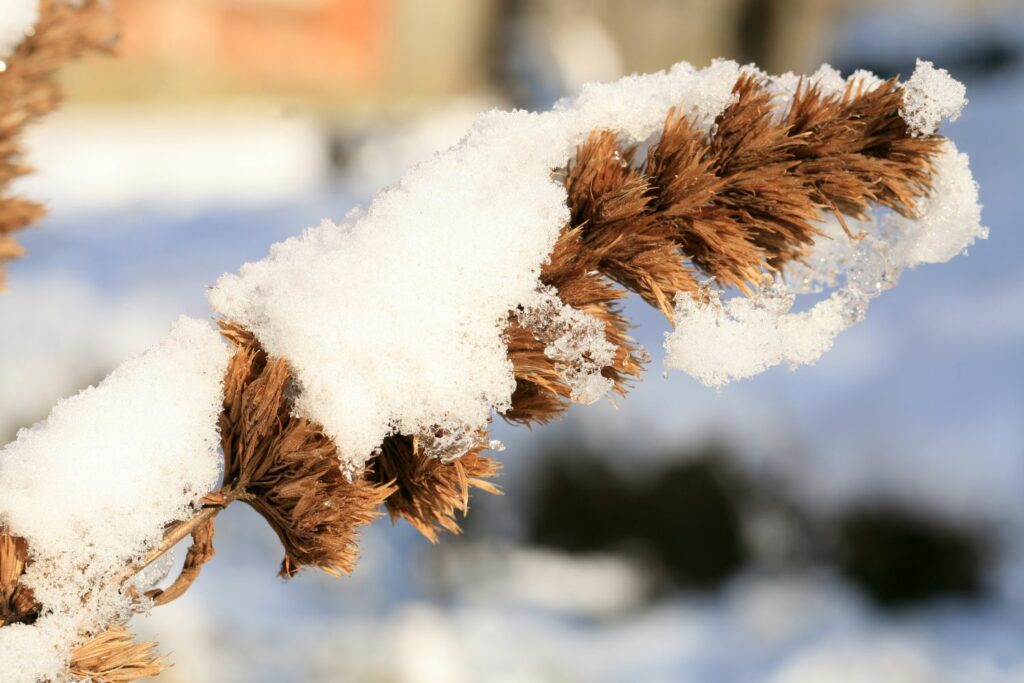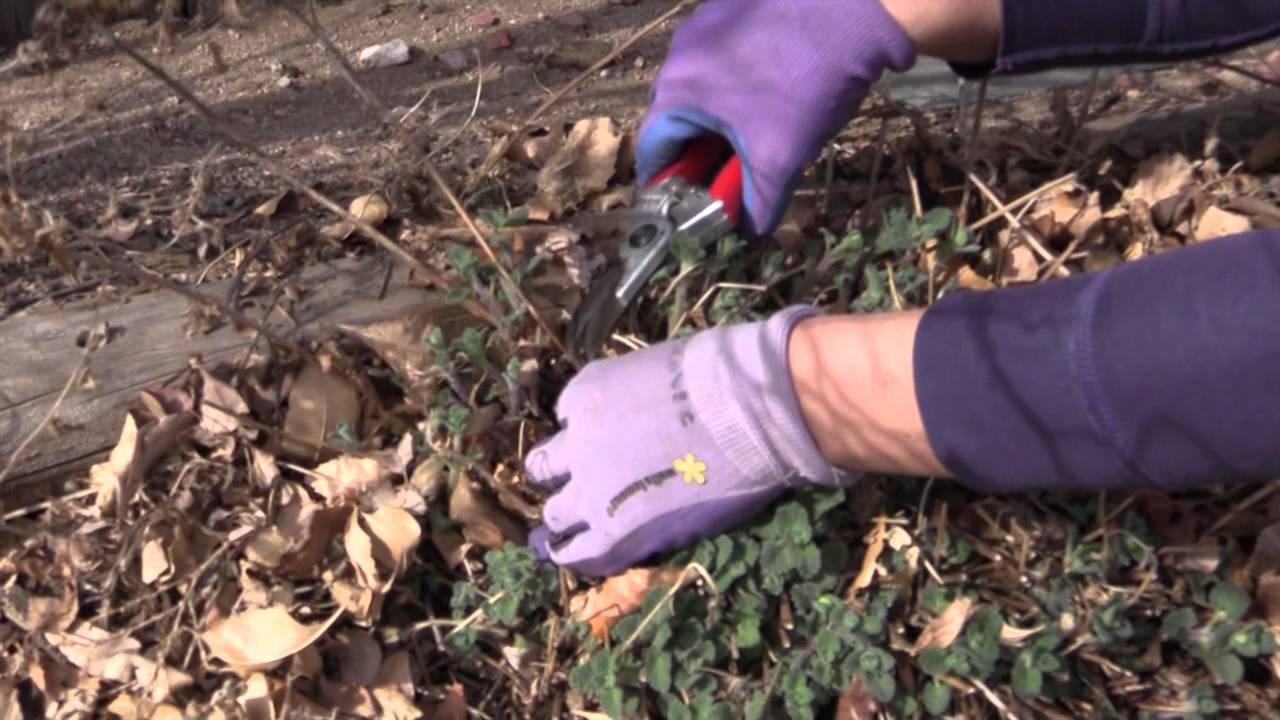Since I’ve learned about organic farming, I like going to our community garden with my friends to try out new ways to grow plants and do
Proper care of catmint (Nepeta) includes not only proper watering and fertilising, but also pruning. If you want your catmint to grow well and have pretty flowers, you should know what to look for when you prune it. This article will explain why you should cut back your catnip, when it’s best to do it, and how to do it.
With its aromatic gray-green foliage and vibrant purple-blue flowers catmint (Nepeta) is a stellar herbaceous perennial for gardens. To keep your catmint looking its best occasional pruning is needed. Proper timing of cutting back catmint is key to maintaining a neat appearance and abundant blooms.
Follow this guide to discover the optimal time to prune catmint for a healthy, vigorous plant
Why Prune Catmint
Here are some of the main reasons for pruning catmint plants:
- Encourage compact, bushy growth instead of leggy, floppy stems
- Remove spent flower spikes to promote additional blooming
- Maintain size and shape, preventing spread
- Improve air circulation and light penetration
- Remove damaged or diseased growth
Regular pruning improves catmint’s form for better aesthetics and flowering. It’s an important part of care.
When to Prune Catmint in Spring
The best time for pruning catmint is in early spring. Here are signs spring pruning time has arrived:
- New growth emerges at the base of plants
- Daytime temperatures reach about 60°F
- Chance of frost has passed
- Flower spikes begin emerging
Pruning in early spring allows time for the plant to generate new foliage before bloom season. It also removes any dead growth from winter.
Spring Pruning Tips:
- Cut back old flower stems to just above new basal growth
- Remove up to 1/3 of plant height for shape
- Prune lightly starting in year one to avoid overthinning young plants
- Disinfect tools between cuts to prevent disease spread
Spring pruning sets the foundation for well-shaped, flowering plants. But an additional trim later encourages even more blooms.
Summer Pruning for Prolific Flowers
To maximize catmint’s long bloom period from late spring to early fall, give plants a midsummer haircut. Here’s when and how to do summer pruning:
- Prune in July or August about 6-8 weeks after first blooms fade
- Cut back stems by 1/3 to remove spent flower spikes
- This stimulates new growth and flower buds
- Make cuts just above strong basal shoots or fresh leaves
Deadheading flowers through summer also removes faded blooms and keeps plants tidy. Combine with midsummer pruning for the best floral display.
** Avoid cutting catmint back later than mid-August.** This gives new growth time to harden off before winter dormancy.
What to Prune When Cutting Back Catmint
When cutting back catmint plants, remove:
- Old flower stems down to the leaf sets or emerging shoots
- Leggy non-flowering stems
- Weak, broken, or diseased stems
- Overgrown shoots to reshape plants
- Up to 1/3 of total plant height
Leave emerging leafy shoots intact to fuel regrowth. Avoid shearing off top growth entirely.
How to Prune Catmint
Follow proper technique when pruning catmint to avoid damage:
- Use clean, sharp bypass hand pruners or gardening shears
- Cut at an angle above a leaf node or emerging shoot
- Remove debris and dead leaves around plants when done
- Disinfect tools between plants to prevent disease transmission
Take care not to cut back growth too severely. Removing more than 1/3 of a catmint’s height can stress the plant. Go slowly, assessing the best places to trim.
Catmint Care After Pruning
Proper care after cutting back catmint is also vital:
- Water well after major pruning to reduce stress
- Apply a balanced fertilizer to nourish new growth
- Watch for signs of new sprouts emerging after a few weeks
- Prune lightly to shape regrowth
- Monitor for pests or diseases and treat any found promptly
With attentive aftercare, catmint will quickly recover from pruning. Just avoid overcutting, water sufficiently and keep an eye on regrowth.
Avoid Pruning Catmint in Fall
It’s best not to cut back catmint significantly in the late summer or fall. Here’s why autumn pruning should be avoided:
- Removing protective foliage just before winter leaves plants vulnerable
- New growth triggered won’t have time to harden off before frost
- Tender new shoots and leaves are prone to winter kill
At most, only remove spent flower spikes in very early fall. Leave the main plant intact going into winter dormancy.
If you must prune catmint late, cut no more than 1-2″ to remove dead growth. Avoid major fall pruning.
Signs Catmint Needs Pruning
Watch for these cues your catmint would benefit from a trim:
- Plants appear overgrown, falling open at the center
- Stems are leggy and thin with reduced leaf sets
- Few flowers are produced, mainly on outer tips
- Old flower spikes and dead leaves clutter interior
- Plants lose shape and spread into adjacent areas
Routine pruning restores a bushy habit, healthy foliage, and prolific blooms. Timing it right maximizes catmint’s performance.
Pruning Catmint Plant: A Quick Summary
Follow these catmint pruning guidelines:
- Prune first in early spring as growth resumes
- Remove up to 1/3 height to shape and thin plants
- Cut back again midsummer to renew flowering
- Avoid heavy pruning past mid-August
- Use cleaned, sharp bypass pruners
- Disinfect tools between plants to prevent disease spread
- Water after major pruning and feed with fertilizer
Properly timed pruning keeps catmint neat and floriferous for seasons of enjoyment. Let those blooms flourish with a perfect cut!
Pruning catmint in the event of disease
Catnip is sometimes attacked by powdery mildew. In such a case, it helps to remove the affected parts of the plant and the flowerheads. That way, the plant doesn’t have to work as hard to make flowers, and it can focus on its main job: fighting the fungus.
When to prune catmint
When you cut your catmint, there are different cutting times for each individual measure based on what you want to achieve. You should cut back your catnip after the main blooming period if you want it to bloom for longer. By July, flowering is usually complete and it is time for pruning. If your catmint has a disease or pests, you should cut off and get rid of any parts of the plant that are sick right away. The best time to cut catnip is in the summer if you want to use the leaves and flowers as a medicine or herb. When to prune your catmint: between February and March in the spring is best if you want to stop it from spreading.

Tip: Pruning the plant in the autumn will not be rewarded, be sure to wait until spring. After all, if catmint is cut back in autumn, it unnecessarily weakens it before the cold season.
To propagate catnip, you can cut off individual shoots between April and July.
Pruning catmint, summary:
- Prolongation of flowering: After the main flowering period in July
- To protect health: At any time if there is a disease or a pest infestation
- For use as a medicinal and aromatic plant: In summer
- Preventing spreading: In the spring between February and March
- To propagate: Between April and July
How to Cut Back Catmint in Spring
FAQ
Should you cut back catmint in summer?
Should catnip be cut back for winter?
Can you cut back catmint plants in fall?
It is not recommended to prune catmint plants in fall as this can encourage new growth that is vulnerable to frost damage. Can I cut back my catmint plants in summer? Yes, you can cut back your catmint plants in summer to remove any long or leggy stems and promote bushier growth. How often should I prune my catmint plants?
How often should you cut back catmint?
Despite being easy to care for, catmint requires regular pruning to maintain healthy growth. Although cutting it back at least twice yearly is ideal, you may want to remove the plant’s damaged stems throughout the year to maintain a neat appearance.
When should you prune a catmint plant?
If you want to promote bushier growth, prune your catmint plants in early spring before new growth appears. This will encourage the growth of new branches from the base of the plant. If you want to prevent your catmint plants from becoming leggy, prune them regularly throughout the growing season to remove any long or weak stems.
How do you trim a catmint plant?
If you’re trimming catmint to prepare for the next season, lightly cut down the plant’s dead stems, leaving behind around 4 to 6 inches of growth. This will keep the catmint plant insulated from severe winter and frost damage. You can follow the same procedure for spring cleanup.
- The Ultimate Guide to Growing Strawberries in Raised Beds - August 8, 2025
- No-Dig Garden Beds: The Easiest Way to Grow a Beautiful Garden - August 6, 2025
- How to Protect and Preserve Wood for Raised Garden Beds - August 6, 2025

